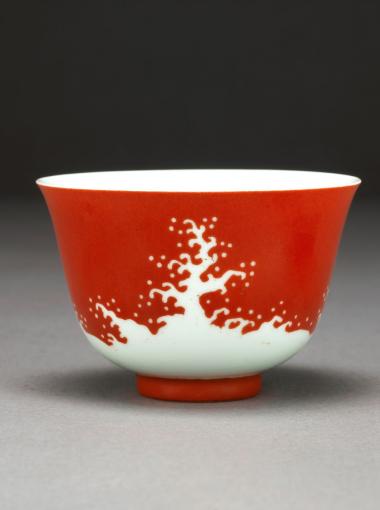The circular bowl is mounted on a small low foot. The translucid, veined white jade confers its sensuality upon a décor composed of two facing zhi dragons forming the handles. Mouths and feet grasp the edge while the buttressed bodies design volutes on the sides. Delicate entwined incisions and engravings suggest the coat on the body and paws, showing a certain striving for realism. With their perfectly symmetrical movements, these two dragon-handles enliven the cup with curves and counter-curves.
Jade, an extremely hard material, blunts most metal tools. Abrasion of this stone by using sand, sometimes wet with water, is the enduring secret of this work that requires tools such as saws, emery grindstones, and drills.
This type of archaising piece was intended for scholars’ cabinets. Indeed, since the Song period (960-1279), the élite’s fondness for antiques led to the return of jade presenting an antique-style decorative repertory, such as the zhi dragon found on the jades of Antiquity that would continue under the Ming. Nonetheless, new, flowing forms celebrating the luminous veins inside the gems would be preferred by commissioners.
The mannerist handling of this bowl would be borrowed by Dehua potters, the first creators of the famous Chinese white porcelain, highly sought by Westerners in the 17th-18th centuries. This piece attests the prestige of these jade works in Europe. After belonging to the collections of Cardinal Mazarin (1602-1661), it became number 80 in the inventory of Louis XVI.

